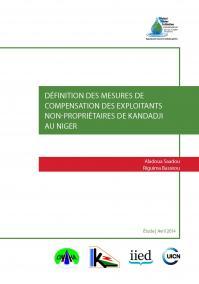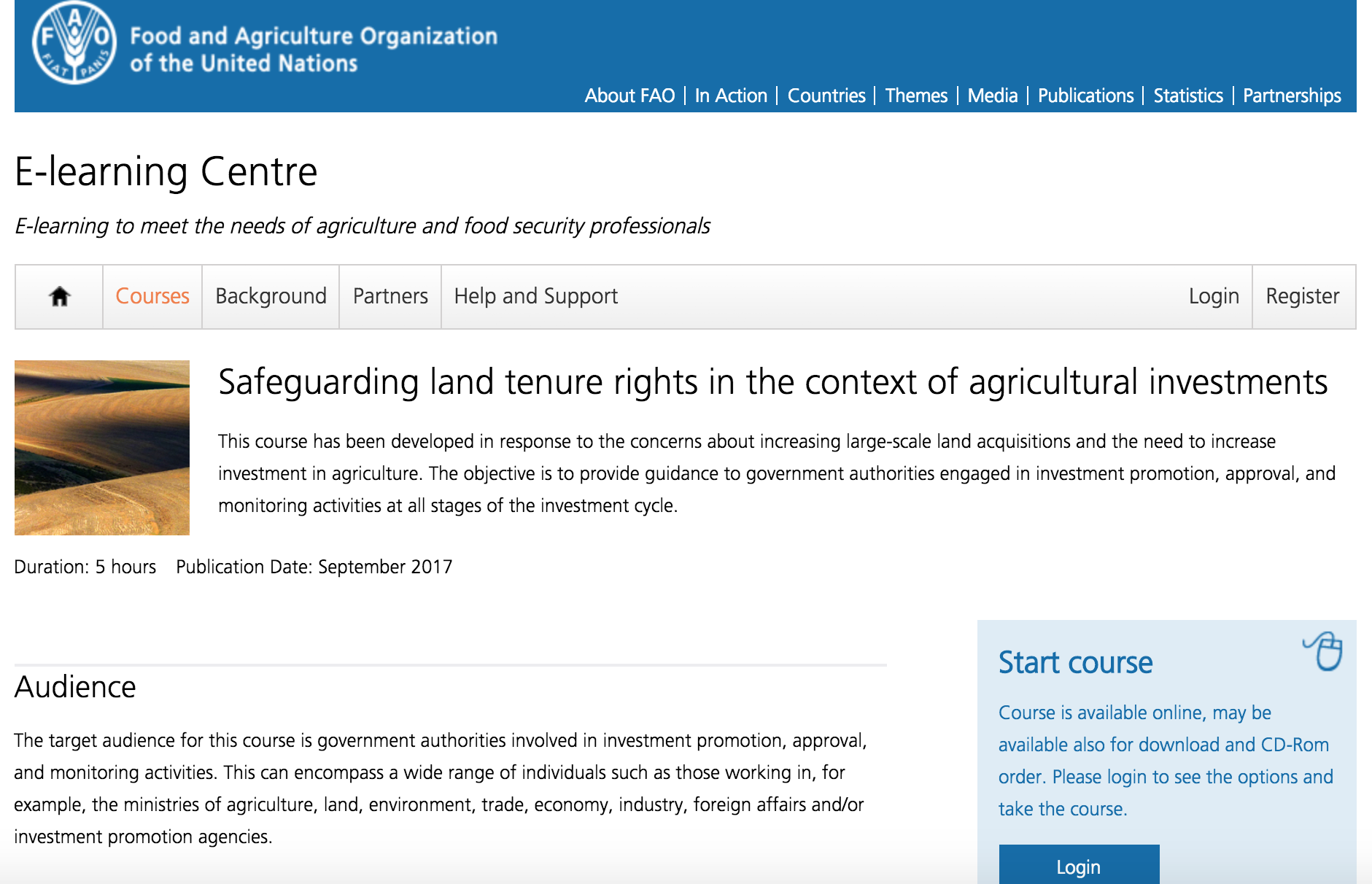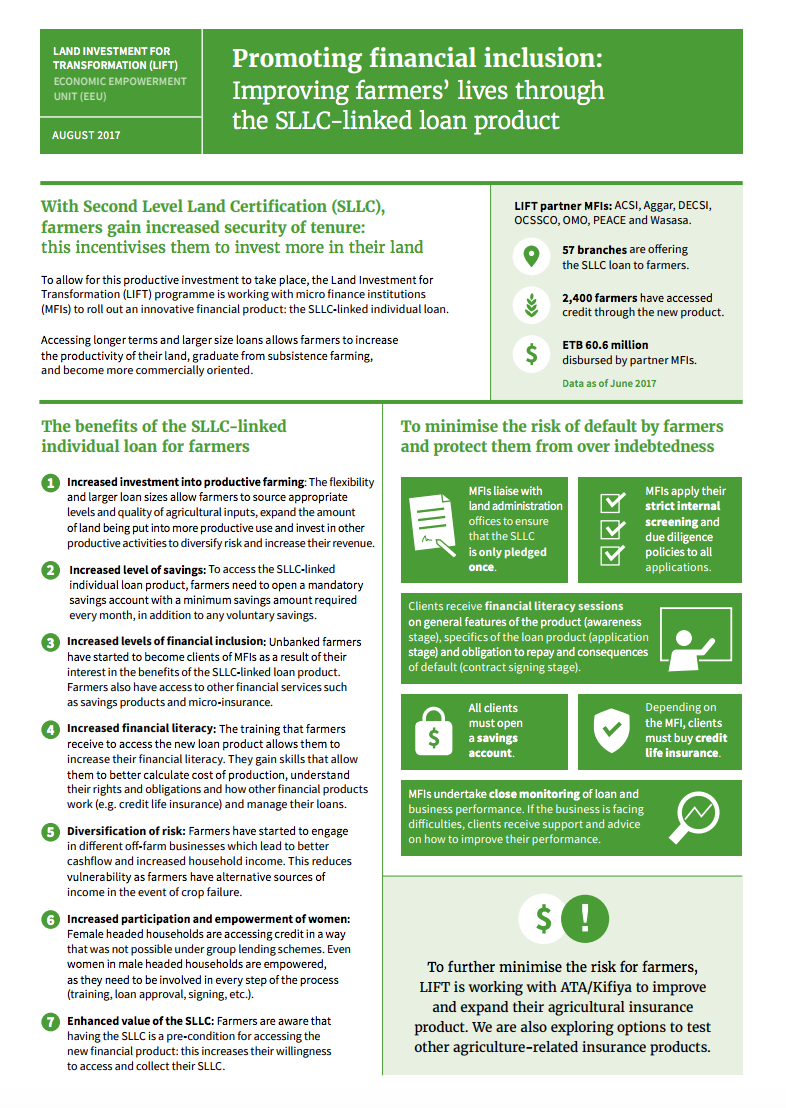Guide to improving land tenure security in irrigation schemes in Niger
There are 85 irrigation schemes in Niger that cover around 16,000 ha and are cultivated by 40,000 farmers. The informal status of these irrigation schemes, and their occupants, has created problems due to population growth and the increasing scarcity of natural resources. Holders of traditional land rights have challenged government decisions concerning land attributions and property rights within the schemes, and have occasionally prevented construction from proceeding.
Guide de sécurisation foncière sur les aménagements hydro-agricoles au Niger
Le Niger compte aujourd’hui 85 aménagements hydro-agricoles (AHA), qui s’étendent sur environ 16 000 hectares et font travailler plus de 40 000 exploitants. Avec la pression démographique et la raréfaction des ressources naturelles disponibles pour l’activité agricole, l’informalité de la gestion du foncier des AHA et du statut des personnes qui les exploitent est devenue problématique.
Defining compensation measures for non-landowning producers at Kandadji in Niger
Construction of the Kandadji dam in Niger will involve, among other consequences, the appropriation of agricultural land owned by customary holders but also in many cases sub-holdings of other non-landowners. The government offered a long lease of 50 years for owners in compensation for their expropriated property rights.
How should the State compensate for the loss of the right of use by non-landowners farming land expropriated for the development of the Kandadji dam? This study aims to answer this question and proposes the use of a 'contract of occupation'.
Analyse des systèmes de production du périmètre irrigué de Bagré (Burkina Faso)
Le développement de l’irrigation fait partie des stratégies prioritaires dans les pays du Sahel pour lutter contre la pauvreté et l’insécurité alimentaire. À l’heure où les gouvernements s’engagent, une fois de plus, à augmenter les superficies irrigables, il a semblé pertinent d’analyser, conformément aux lignes directrices de la CEDEAO, les résultats obtenus sur des grands périmètres aménagés dans les années 80 et 90 afin d’en tirer les leçons pour les aménagements futurs.
Analysis of the productive systems in the Bagré irrigation scheme (Burkina Faso)
The development of irrigation is one of the priority strategies in the Sahel countries to tackle poverty and food insecurity. At a time when governments are once again committing to increase irrigable areas, it seemed relevant to analyze, in line with the ECOWAS guidelines, the results achieved in large irrigated schemes developed in the 1980s and 1990s to draw lessons for future developments.
Safeguarding land tenure rights in the context of agricultural investments
This course has been developed in response to the concerns about increasing large-scale land acquisitions and the need to increase investment in agriculture. The objective is to provide guidance to government authorities engaged in investment promotion, approval, and monitoring activities at all stages of the investment cycle.
Social and Environmental Code of Practice (SECoP) for Responsible Commercial Agriculture in Ethiopia
The Social and Environmental Code of Practice (SECoP) for Responsible Commercial Agriculture is designed to help investors in ensuring that their investments are inclusive, sustainable, transparent, and respect human rights. While it focuses on Ethiopia, it will be a useful resource for investors and companies operating in other countries.
Resolución Nº 201-2017-ANA ─ Modifica el Reglamento para la delimitación y mantenimiento de fajas marginales de los cauces de agua naturales o artificiales.
La presente Resolución modifica el Reglamento para la delimitación y mantenimiento de fajas marginales de los cauces de agua naturales o artificiales, en relación a la realización de cultivos en la fajas marginales y en las riberas de los ríos amazónicos, disponiendo que la Autoridad Administrativa del Agua (AAA) autoriza el uso temporal de las fajas marginales y de las riberas de los ríos amazónicos para la siembra de cultivos, siempre que no se afecten los usos públicos, el curso de las aguas y no impida el mantenimiento y limpieza de los cauces.
Policy brief for Privately Protected Areas Futures 2017: Supporting the long-term stewardship of privately protected areas
Globally, privately protected areas (PPAs) are an increasingly popular approach to long-term protection of biodiversity on privately owned lands. PPAs provide multiple ecological, social and economic benefits to diverse range of stakeholders in across a range of contexts. These include supporting the desire of landowners to protect conservation values on their land, contributing to national conservation targets, and reducing financial costs of land management to governments.
LEGEND Land Policy Bulletin 8
This LEGEND bulletin explores the relationship between agribusiness and land rights. It features articles on the power of local engagement for financial investment, using technology for mapping rights, and catalysing private sector respect for community land rights.
Promoting financial inclusion
With Second Level Land Certification (SLLC), farmers gain increased security of tenure: this incentivises them to invest more in their land.
To allow for this productive investment to take place, the Land Investment for Transformation (LIFT) programme is working with micro finance institutions (MFIs) to roll out an innovative financial product: the SLLC-linked individual loan.
Accessing longer terms and larger size loans allows farmers to increase the productivity of their land, graduate from subsistence farming, and become more commercially oriented.








